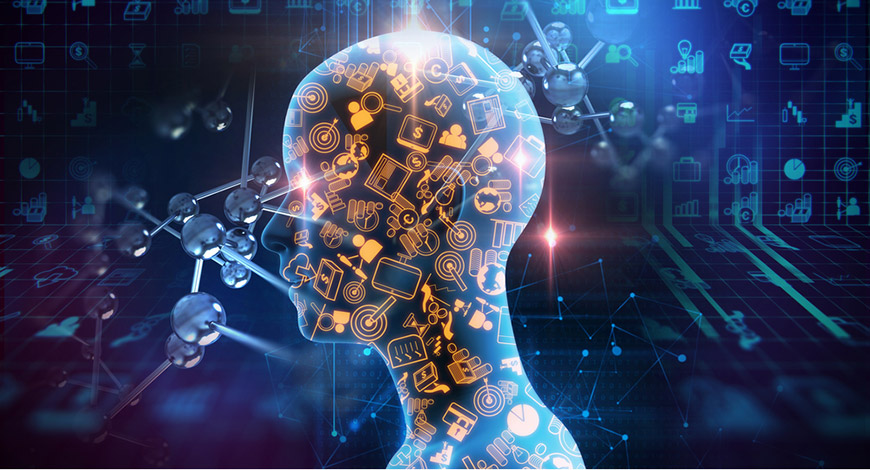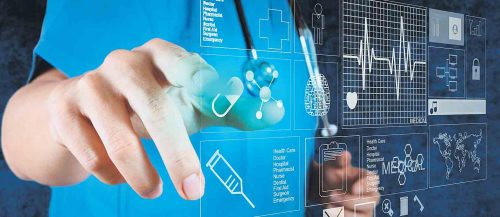
Training Programs Can Enhance The Skills And Employability Of The Existing IT Workforce
Add Your Heading Text Here

Several pieces of research, studies and content have been published about the exponential growth witnessed in emerging technologies – AI, blockchain, RPA, cybersecurity, IoT, AR/VR. There is no doubt that these are the emerging technologies of the future, which will help catapult the next growth spurt of enterprises. Professionals across the information technology landscape are queuing up to upskill, reskill themselves across these mentioned areas to continue to be relevant in the workforce for tomorrow. But for those who already have learning, skills and experience in these emerging technologies, how can they take their career to the next level?
The flux of deployment-ready and value-generating use cases across industries suggest that a cross-technology expertise across these emerging technology areas would be the next big source of career growth for incumbent professionals. We witnessed few years ago, software developers were keen to reinvent themselves as full-stack developers. High performing technologists wanted to develop proficiency across the software architecture and the development life-cycle – from database to UI, and from infrastructure set-up to deployment. Similarly, IT professionals today should seek the synergistic benefits of combining areas across emerging technologies. This article will focus on what emerging technology areas are being effectively combined by enterprises.
AI + Blockchain
Artificial intelligence is the set of technologies that help machines mimic human functions. Blockchain is the emergent technology paradigm that helps build a distributed, immutable sequence of financial events and transactions. With a strong uptick in the dispersion of blockchain use cases, enterprises are also looking for a robust way to surface potential fraud and other anomalous events in real-time. The events of fraud attempt and security threats to blockchain systems are often very high-speed and require immediate attention and analysis to ensure that the perceived anomalies are rooted out. Using AI, specifically machine learning, we can rapidly parse through a log of events to find anomalous situations and flag them off in real-time, protecting the integrity of the blockchain.
AI +IOT
Internet of Things is the network of physical devices that exchange data. This very definition makes the case for combining artificial intelligence and IOT plainly clear. IOT-enabled sensors usually are a source of multitudinous data – based on the use case employed – which is increasingly being sent to the central controlling server in real-time, rather than in batches. Picking out key inferences from voluminous data, sent in real-time by numerous sensors is a task that is again handed over to AI systems – typically machine learning systems. While IOT systems can ably sense, transmit and store data, ML systems are required for making sense of the data and providing input on whether any action is required to be taken, and potentially even suggesting what best-case action could be taken.
IOT + Smart Cities
While the concept of a Smart City is a sub-segment of IOT, it’s the other way around. IOT forms only one of the component of powering a smart city. In addition to IOT, the Smart City stack would typically also include cloud (for running processes and storing data), Artificial Intelligence (for data analysis and learning) and an element of urban planning (for deciding the what and how of a Smart City design). By combining knowledge of IOT with these other ancillary areas can help IOT professionals become valuable and irreplaceable resources in this fast-growing technology area.
AI + Behavioral Sciences
This final combination may sound surprising, but one of the most valuable and high-impact grouping of skills might just be the combination of data science and behavioral science. While AI and data science can provide the what (‘What happened?’ And ‘What should we do now?’) of a business scenario, behavioral sciences inform the how part. Consider the example of Amazon, which has numerous examples of the coming together of behavioral sciences and AI. The recommendation engine uses artificial intelligence to answer the what part of ‘what are other people buying’. But, the idea that it will lead to continued stickiness on the website, serve as a wide showcase of SKUs available on it, while promoting product bundling and larger cart sizes is a clear behavioral sciences intervention and contributes massively to the success of AI applications.
If you are a professional already conversant with one of the emerging technology areas, combining that with another emerging area can be hugely beneficial. IT professionals today in these areas should strongly consider leveraging synergies across multiple technology areas – which can help them be better-rounded, high-value practitioners in an ever evolving areas of technology.
Related Posts
AIQRATIONS

Get AI to Solve Systemic Problems
Add Your Heading Text Here

It is critical that public services ramp up their data sets, identify partners for ideation and leverage technology
For all its growth and development since independence, India faces many systemic problems. From our complex and labyrinthine legal system to the inefficiencies in our agricultural sector, large-scale problems still abound.
We need to better connect our burgeoning population with basic facilities. While Artificial Intelligence may not be the panacea in itself, we need to harness its potential to improve living conditions. Thankfully, we have the intellectual capital – our information technology peers – that can bring substantial dividend in this arena. By combining our inherent technological prowess and the keenness of our government in promoting technology-led interventions, AI can truly be a game-changer for India. Here’s an India-specific perspective on how AI can be a force for good for our country.
Agriculture Sector
Though the agricultural sector sees piecemeal improvements, numerous problems go unresolved – from low yield, low predictability of yield, poor access to institutional credit and financing to lack of transparency around pricing for produce. Using AI, agriculture can be transformed by:
• Provision of on-demand information on quality of seeds, fertilizers, pesticides and the track record of providers and opportunities for mechanisation through better equipment. This can be done through bot-enabled ‘Kisan Helplines’ that can provide guided advice for improving productivity
• Improving predictability of yield by ingesting data on soil health, equipment quality, farmer activity and weather conditions
• Improving visibility of market price trends for crops produced (domestic and international) so that they can make informed decisions on pricing, while exploring going to market without intermediary interference
• Leveraging data from productivity, yield and forecasts and potential prices to assess creditworthiness of individual farmers. This will speed up disbursement of finance and ensure farmers get better rates for crop insurance
Smart Cities
Indian cities have grown in an extremely unplanned manner, with public infrastructure and services struggling to catch up. Consider this – the cost of traffic congestion alone in just four major cities is estimated to be $22 billion annually. With AI, urban planners can:
• Track movement of traffic and people to identify opportunities for ‘decentralising’ major hubs and develop future-ready public infrastructure to facilitate smoother movement of people, vehicles and goods
• Model population density and availability of sanitation facilities to improve access. Additionally, by applying image analytics on drone surveilled images can help determine quality of sanitation facilities and accelerating their upkeep
• Identify and improve access to current and emergent residential and commercial hubs by creating more optimal public transport networks
• Align consumption of resources – energy, water, cooking gas – to actual needs
• Crowdsource, store and take action to improve infrastructure by directly soliciting participation from citizens
• Improve planning and forecasting for infrastructure development through better coordination between public works departments, leveraging traffic data and streamlining supply chains
Education System
The education system in India is among the most outdated and unequitable when compared with the developed world. Problems abound from a prominent level of student dropouts, to quality and methodology of teaching, lack of workforce readiness among students and outdated curricula. Here’s how AI can help improve certain facets:
• Track the demand for skills in the market and the educational infrastructure available to supply those skills through a National Skills Repository. This will help keep education concurrent with current market demands
• Automate routine, time-consuming tasks – from creating and grading test papers, developing personalised benchmarks for each student, identifying gaps in student development, tracking aptitude and attentiveness within each subject – and enabling teachers to focus on curriculum development, coaching and mentoring and improving behavioural and personality aspects of students
• Identify potential dropouts and root-causes, enabling educational institutions to take proactive steps to ensure student retention and course completion
Healthcare
The doctor-to-patient ratio in India is quite poor – with 0.62 doctors available per 1,000 people (WHO recommends a ratio of 1:1,000). When you add to that the inadequate spread of doctors across the country, we have a poorly served population, ranking 125th in the world for life expectancy. Using AI, we can:
• Identify areas with a high population density, which are underserved by public hospitals. Further, improve the deployment and availability of doctors, medical equipment and medication to better serve the population
• Track patient histories and clinical notes to prescribe evidence-based treatment
• Speed up routine processes such as scanning X-rays and CT-scans for malignancies using image analytics
• Improve public health studies by identifying early warning signals through alternative methods such as social media tracking
• Identify individuals without health insurance and incentivise their usage to improve patient medical adherence
Legal Challenges
When adjusted for VIP protection, India claims an extremely poor police-to-people ratio with 1 police for every 663 people. There are 27 million cases pending with courts, of which six million have been pending for over five years. AI can be a crucial enabler for our crumbling governance system and can help:
• Speed up review and summary writing of long drawn cases and their
history using natural language processing and voice recognition
• Use image analytics for surveillance and identification of wrong-doers in areas recognised for high criminal activity
• Surface fraudulent deals – especially among land deals – using anomaly detection frameworks to speed up delivery of justice
• Improve public services and transparency by routing RTI requests through intelligent bots, thus making it more efficient to get critical information
With a population of over 1.3 billion people, distributed across a huge landmass, public services urgently need technology-centric solutions that are both intelligent and scalable. AI will effectively address a number of these problems. To this end, it is critical that public services act sooner than later and ramp up their data sets, identify technology partners for ideation and apply AI techniques to power the India’s next leap forward.

